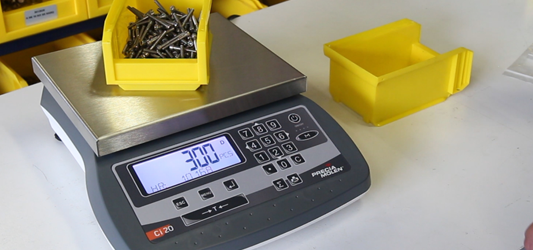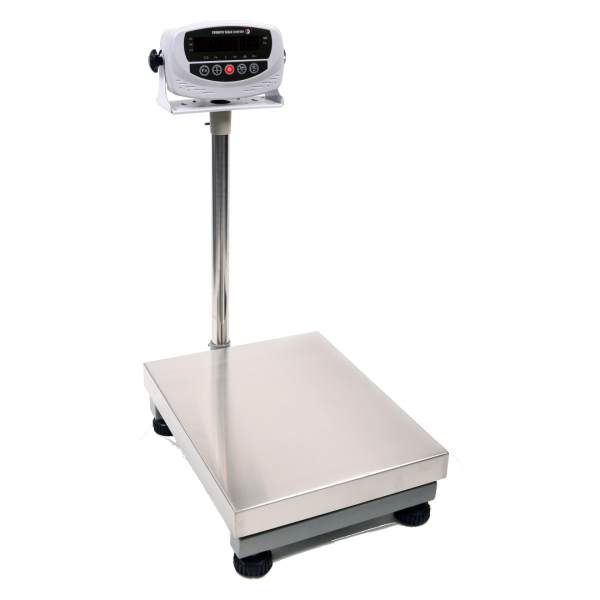How Industrial Scales Enhance Safety and Precision in Bulk Weighing Applications
How Industrial Scales Enhance Safety and Precision in Bulk Weighing Applications
Blog Article
Exactly How Commercial Scales Work: A Comprehensive Summary for New Users
Recognizing the auto mechanics behind commercial scales is important for new users who intend to make sure accuracy in their dimensions. These gadgets count on load cells and pressure scale modern technology to convert weight into a quantifiable style, however the nuances of their operation extend beyond plain capability. From the numerous kinds offered to the necessary strategies for appropriate usage and maintenance, each facet plays a significant role in attaining reliable outcomes. As we check out these elements, one should consider just how these aspects communicate to enhance efficiency in varied industrial applications.
Essentials of Industrial Scales
Industrial scales are essential devices utilized throughout different sectors, consisting of manufacturing, logistics, and farming, to make sure accurate weight dimensions of heavy lots. The essential concept behind industrial ranges includes the conversion of weight right into a quantifiable form that can be presented digitally or analogically. These ranges utilize various devices, such as tons cells or mechanical bars, to identify the weight of objects positioned upon them.

Along with their measurement capabilities, commercial ranges are created to stand up to extreme atmospheres, featuring robust construction that stands up to dirt, dampness, and hefty impacts. Calibration and maintenance are vital to ensure accuracy, as also minor discrepancies can bring about substantial monetary ramifications. By understanding the fundamentals of industrial ranges, users can value their significance in numerous industrial applications.
Kinds Of Industrial Scales
Numerous sorts of commercial ranges deal with the varied needs of various sectors, each developed to take care of specific weighing jobs with precision and dependability. Among the most usual kinds are floor ranges, which are suitable for evaluating bulky and heavy items. These ranges usually include big systems and can fit palletized goods, making them necessary in storage facilities and delivery facilities.
An additional type is bench scales, which are usually used for smaller sized things in manufacturing and retail setups. They give accurate measurements for items that require precision, such as chemicals or components in production line (Industrial Scales). For mobile operations, mobile ranges offer versatility and convenience of transportation, ideal for fieldwork or short-term setups
In applications calling for high-capacity measurements, such as in bulk material handling, crane scales and tons cells are used. These ranges can measure loads suspended from a crane or other lifting device, ensuring safety and accuracy during operations. Furthermore, specialized ranges like checkweighers are used in assembly line to keep quality assurance by ensuring that products meet weight specifications. Each kind of industrial scale plays an important duty in boosting functional performance and precision throughout different markets.
Exactly How Evaluating Systems Work
Weighing devices are crucial parts that allow accurate dimension of mass throughout different commercial scales. These mechanisms make use of different principles of physics and design to supply accurate weight readings, essential for supply administration, quality assurance, and conformity with governing requirements.
One common kind of weighing device is the tons cell, which operates on the concept of stress gauges. When a lots is applied, the lots cell warps slightly, creating an electrical signal symmetrical to the weight. This signal is after that exchanged an understandable weight measurement by the range's electronic devices.
Another commonly utilized mechanism is the mechanical equilibrium, which utilizes a system of weights and levers. Industrial Scales. This method depends on the concept of balance, where the weight of the item being measured is stabilized against recognized weights, enabling direct dimension
Additionally, hydraulic and pneumatic scales utilize fluid characteristics concepts to measure weight. These systems utilize the stress exerted by a tons to determine weight, using high precision for enormous lots.
Proper Usage Strategies
When utilizing industrial ranges, sticking to proper usage strategies is essential for making certain accurate measurements and preserving tools integrity. It is necessary to pick the appropriate scale for your specific application, as scales vary in capability and accuracy.
Prior to considering, make certain that the range is positioned on a stable, level surface area without resonances or disruptions. This will certainly help to minimize errors created by exterior variables. Additionally, calibrate the scale according to the manufacturer's specifications prior to utilize, making certain that it is operating appropriately.
When positioning things on the range, disperse the weight equally to stay clear of tipping or harming the tools. Constantly permit the range to maintain prior to videotaping the weight, as variations might occur during initial placement. For bulk products, make use of containers that are appropriate for the scale dimension to avoid overloading.
In addition, stay clear of positioning cool or excessively hot items straight on the scale, as temperature variants can impact accuracy. Last but not least, keep the weighing system free and internet clean of debris to stop contamination and make sure trustworthy results. By following these methods, users can make best use of the performance and long life of their industrial ranges.
Maintenance and Calibration Tips
Making certain the durability and precision of industrial scales requires thorough upkeep and routine calibration. A preventative maintenance timetable is vital; it must consist of routine examinations to identify deterioration, specifically on load cells and various other delicate components. On a regular basis cleaning the scale's surface area and making certain the surrounding area is without redirected here debris will assist keep its integrity and performance.
Calibration is similarly crucial and should be done at normal intervals or whenever the scale experiences considerable modifications in temperature level, humidity, or physical displacement. Make use of certified calibration weights that are deducible to national requirements for precision. Document each calibration session diligently to track efficiency gradually and identify any patterns or reoccuring problems.
Furthermore, be conscious of the range's atmosphere. Stay clear of positioning it near resources of resonance, electro-magnetic interference, or severe temperature levels, as these factors can adversely affect measurements. Train all operators on proper scale use and upkeep methods to make certain constant efficiency and accuracy. By adhering to these upkeep and calibration pointers, customers can improve the dependability of their industrial scales, ensuring optimum procedure in any type of setting.
Conclusion

Understanding the mechanics behind industrial scales is essential for new users who want to ensure accuracy in their measurements.Industrial scales are important tools utilized across various sectors, including manufacturing, logistics, and farming, to make certain exact weight dimensions of hefty tons. The essential principle behind industrial scales entails the conversion of weight right into a quantifiable type that can be shown digitally or analogically. By understanding the essentials of commercial scales, users can appreciate their importance in numerous commercial applications.
In final thought, comprehending the operation and upkeep of special info commercial scales is crucial for ensuring exact weight dimensions in various applications. (Industrial Scales)
Report this page